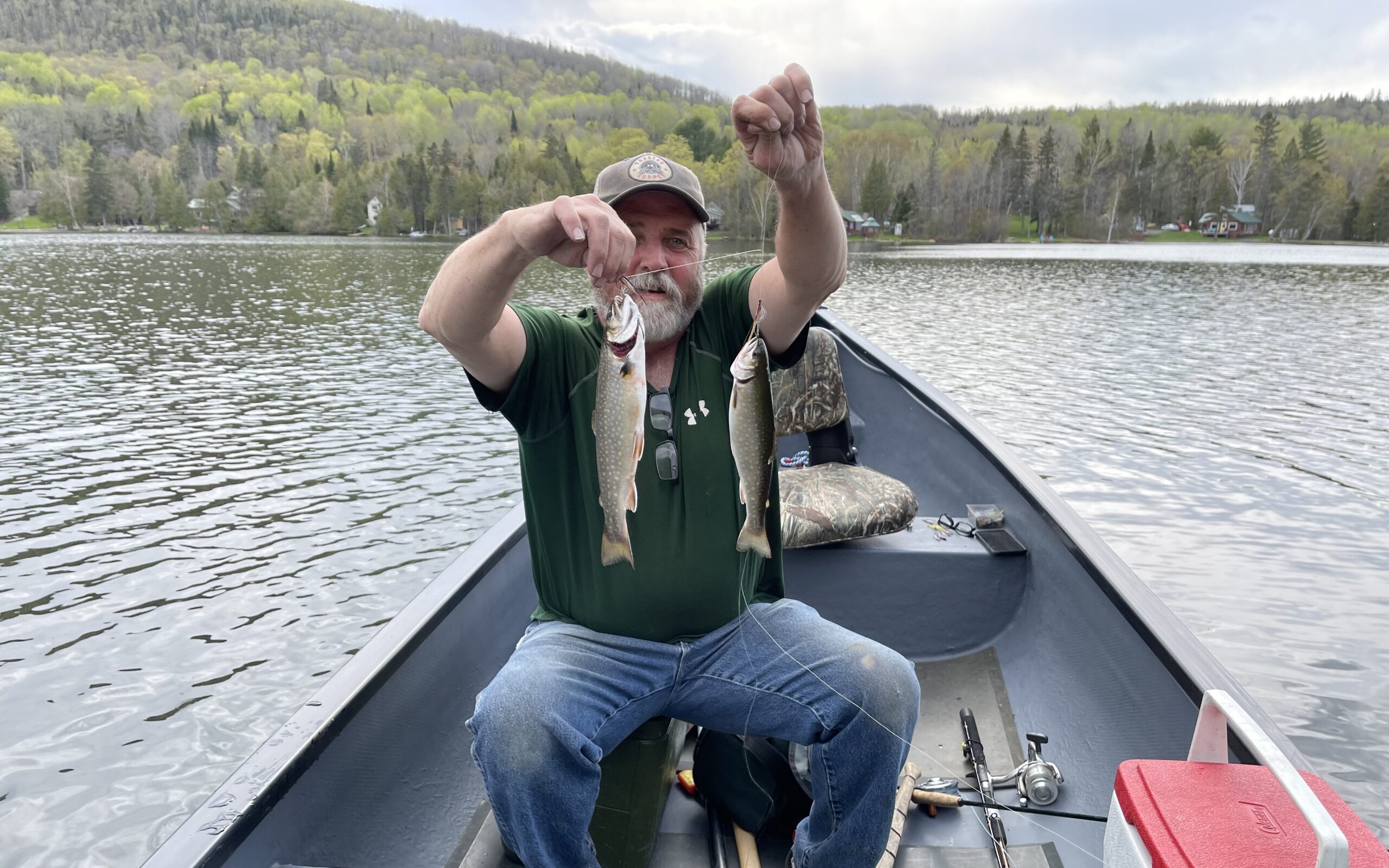Chances are pretty good that baby boomers will recognize this article’s title as the name of a very popular game show that was on TV from 1950 to 1967. Three celebrity panelists were allowed limited questions to determine the occupation of a contestant. During the second half of the show they were blindfolded and allowed to interrogate a celebrity mystery guest in hope of identifying that person. It was a great show and success depended on intuition, perception and smart decisions.
Like fishing sometimes.
For my purposes and this story, perhaps the name of the game should be “What’s your line”? Participants would be spring ice-out anglers with the goal of determining exactly which fly or casting line is best suited to their specific rod and the early season conditions. And it’s not just spring casting and trolling that may require a specific type and weight of line, stream and lake levels, temperatures, and clarity can all affect fishing results. The correct line and even the correct leader weight, length, color and density can turn a bust outing into a boon day.
Let me cite an example from a trolling trip last spring that will help sway the doubters. There are more than a dozen small lakes and ponds within a 30-minute drive of Presque Isle, and most clear of ice a week to two before the larger regional lakes. A friend and I were trolling size six single-streamer flies from my 21-inch Maine Freighter canoe in late April, and I caught and released half a dozen trout in about 40 minutes. My boat buddy had only one strike and no hook-up during that time; he was using an almost identical fly.
Pretty sure what the problem was, I coaxed him into switching rods, and just a few minutes later he hooked and boated a fat and feisty 12-inch brookie. Five minutes later he caught another fish. Our outfits were pretty much identical, except my reel was loaded with a sinking tip fly line that was causing my streamer to run two to four feet deeper than his floating line, depending on trolling speed. This same situation has occurred so often over the years that I now bring a second rod and reel with a sinking tip line on spring outings.

On larger lakes I’ve often used a full sinking line for the first week or so after ice out. It works well before the lake water “turns over” and the fish move up to feed nearer the surface. I keep spare reel spools with a floating, sinking tip and full sinking fly line in my tackle box and can change over to match conditions in less than five minutes. I also use a sinking leader on my spring fly lines to help keep the fly running level and deep. A regular leader on any style of sinking line is counterproductive.
I’m not a fan of any lead core line for spring. There’s no need to troll that deep. Such weighted lines are best for late summer, hot-weather, deep-dredging or downrigger trolling. A Dacron, color-segmented trolling line will work on fly rod and reel or bait casting reels for Rapala style plugs, medium lures and tandem streamers. These combos troll 2 to 4 feet deeper than floating lines and leaders.
Early season fishermen who prefer a spinning or bait casting outfit generally use regular monofilament line for trolling or casting. I bump up to 8-pound test from my standard 6-pound summer mono, and I prefer a red colored line over the semi-clear as it seems to blend into the off-color spring freshet water.
When the lakes and rivers become clearer, I switch to fluorocarbon, which is stronger and less pliable than monofilament brands. Another option for spring trolling is a braided line. Not as thin as other options, braid has almost no stretch so yields a better ratio of more solid hook-ups.
Many fishermen don’t give a lot of thought to line choice, but the right line for certain conditions can make or break an outing. This especially true for spring trolling and late summer, low-water, dry fly fishing.
Open water season is at hand. Ice-out trolling is coming soon, so it’s time to prepare. What’s your line?








